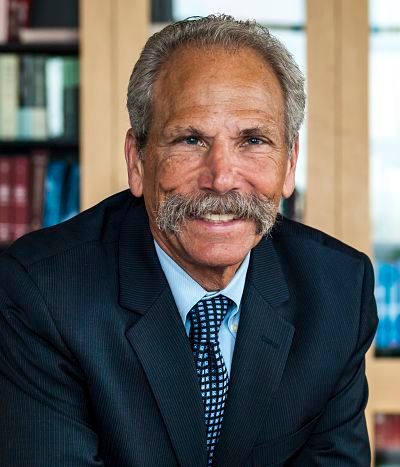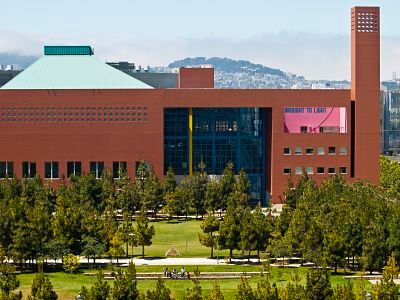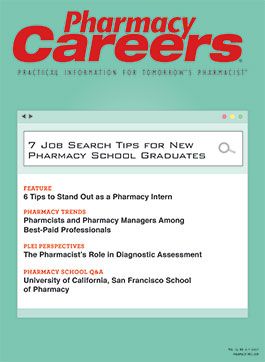Publication
Article
Pharmacy Careers
University of California, San Francisco School of Pharmacy
Author(s):
Did you know that the University of California, San Francisco was the first college pharmacy students could attend in the West, and that it was the 10th pharmacy school to open in the United States?

San Francisco, California
Founded: 1872
Class Size: Around 122
Did you know that the University of California, San Francisco (UCSF) was the first college pharmacy students could attend in the West, and that it was the 10th pharmacy school to open in the United States?
Dean B. Joseph Guglielmo, PharmD, told Pharmacy Times that the school’s founders aimed to “advance pharmaceutical knowledge and elevate the professional character of apothecaries throughout California.”
That mission has remained the cornerstone of UCSF School of Pharmacy since 1884, when its first full pharmacy class of 5 students graduated.
Q: What is unique about your school/program?
A: The school has always focused on advancing knowledge through its basic and clinical science. Its No. 1 ranking in National Institutes of Health funding for 35 consecutive years is a testament to this point.
Similarly, the founders’ goal of “elevating the professional character” of the profession has always been a focus of the school’s contribution to pharmacy practice. The very beginnings of the shift from a product- to patient-oriented profession began in part with the UCSF “Ninth Floor Project.”
Today, pharmacists must be part of team-based care beyond hospital walls, especially with the creation of health care systems, such as the UCSF accountable care organizations, which focus on promoting health and decreasing health care costs.
Lastly, the campus is unique among all academic medical centers in that the education offered is solely professional and graduate (PhD program) with no undergraduate training programs.

A: A continually developing philosophy has been to teach problem-solving skills with the course content serving as the vehicle for this goal. Considering the presence of 4 health professions schools and a graduate division, we also take full advantage of all interprofessional opportunities.
Another important philosophy is for students to link the acquisition of critical thinking while simultaneously improving patient outcomes. As example of this philosophy is the school’s mandate that Introductory Pharmacy Practice Experiences and Advanced Pharmacy Practice Experiences must result in value to both its students as well as its host institutions. Student pharmacists are expected to add value and extend the ability of the pharmacist (and other health care providers) to allow them to fulfill their responsibilities.
Many teaching styles are used, ranging from traditional lectures, to hands-on training, to simulation, to hybrids of the flipped classroom technique. We strive to make our basic and clinical sciences come alive in the classroom; our scientists particularly emphasize the importance of problem solving over rote memorization.
We encourage and support students to take responsibility for their own learning, with faculty serving as partners to facilitate and guide the learning process.
Q: What are some community outreach activities or programs the school participates in? What volunteer opportunities are available to students?
A: UCSF student pharmacists are involved in a variety of community outreach initiatives and programs.
The student-directed Community Outreach Student Alliance (COSA) coordinates the activities of 14 community service projects, which provide health screenings, disease state management consultation, and workshops focused on underserved populations in the San Francisco Bay Area. Focus areas include diabetes, HIV outreach, tobacco awareness, and asthma education, and vehicles include health fairs and a variety of health information programs.
Interprofessional community service opportunities include medical, dental, nursing, and physical therapy students. The UCSF student-run Homeless Clinic and the Mabuhay Health Center are examples of the provision of culturally competent interprofessional care.
Through the Partners in D initiative, UCSF student pharmacists help underserved seniors and health care colleagues navigate the complex Medicare Part D drug benefit. This national award-winning initiative has provided individual counseling to more than 2000 underserved seniors, trained more than 1000 student pharmacists statewide to provide counseling throughout California, and presented more than 80 lectures to health care professionals. Importantly, these initiatives have resulted in significant cost savings to seniors.
Finally, UCSF student pharmacists are active in education initiatives to promote interest in science and pharmacy. The annual UCSF School of Pharmacy Summer Science Camp initiated in 2007 provides a 1-week day camp each summer to motivate and inspire fourth- and fifth-grade students—especially those who are underrepresented in the health sciences—to pursue science in college and as a career. Serving up to 60 students annually and funded through donations, students collaborate with faculty to design a hands-on, inquiry-based science experience.

UCSF student pharmacists are also active in promoting interest in UCSF and the pharmacy profession through outreach programs aimed at undergraduates. The Latino Association of Pharmacy Students Annual Outreach conference brings students to campus to learn about UCSF and pharmacy through student- and faculty-led discussions and panels. The student-led Pharmacy Alliance for Mentoring, Leadership and Information pairs local undergraduates with student pharmacist mentors to learn about the student experience at UCSF and provide insight as they evaluate pharmacy as a career.
Q: What advice do you have for students who will graduate this year?
A: Reflecting upon my career as a member of the faculty and now dean, more professional opportunities exist than ever before. State laws have markedly expanded scope of practice and recognition of pharmacists as providers at the national level is imminent. The gaps in primary care also offer opportunities to the PharmD graduate who can bridge these gaps.
While the opportunities exist, much work still needs to be done. The role of pharmacists in society remains poorly defined. In my own opinion, the role of the pharmacist is clear: to ensure the right patient receives the right medicine. However, at the present time, we don’t fully accept full responsibility for this critical role.
Today’s graduating students must be proactive problem solvers who will break down the barriers that hinder the fulfillment of this remarkable opportunity.







